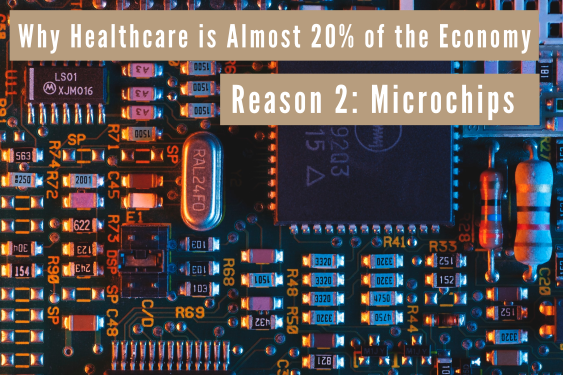
In our last article we discussed how The Stabilization Act of 1942 resulted in an gigantic pool of money to fund a no-expense-spared healthcare industry. In this article I will discuss how advancements in productivity buttressed that phenomenon by creating a pool of extra hands that could help fulfill all that healthcare demand.
Act of 1942 created demand > chips create ability
Bread Stole Our Jobs
Imagine a small village of hunter-gathers before the age of farming and herding. Let’s say this village was 100 people, 50 of which were the hunters and gatherers, and the remaining 50 were the small children, elders, and those unable to hunt or gather. The lifecycle was fairly simple. You were born, your grandparents looked after you while mom and dad hunted and gathered. Granddad was the village elder and de facto government. Your great aunt was the medicine woman and life was pretty simple until you turned ten. At the age of ten it was time to start hunting and gathering, i.e. work!
Much time passed. Then, a thousand years after your existence, someone figured out what wheat was and how you could grow wheat and plentiful and reliable calories out of it. And tasty too! And because the wheat was a reliable source of calories, less people in the village were needed to hunt and gather. Awesome! Now we have more people to build better houses, make weapons, fight with other villages, and maybe add some more medicine people as well.
It’s called productivity and what productivity does is free up hands to do other things, like provide healthcare. Farming was a great advancement in the productivity of calorie production. It led to the world we know today, literally. You don’t hear people complaining about how bread stole our hunting and gathering jobs do you! The hunting and gathering labor unions shook off that loss millennia ago. Now we all accept that farming and herding is how things are meant to be.
Robots Did It
The postwar American baby boom raged and everybody enjoyed the benefits of their pensions and employer sponsored healthcare. Then another thing started to happen. It was the shift from a manufacturing economy to a service economy. The peak employment number for manufacturing was in 1979 and since that time it has steadily declined. A lot of that has to do with robotics and technology and nothing to do with globalization. But the purpose of this piece is not to debate the many theories about free trade agreements and global economics. All I am pointing out is that per capita, more Americans work in the service sector than ever before and a lot of that has to do with the fact that making the things we eat and need to live are produced way more efficiently than they were in 1899 or 1950 for that matter.
Rust to Riches
One of the most famous bank robbers in the profession’s history, was asked during an interview, “Wille [Sutton], why do you rob banks?”
“Because that’s where the money is,” Willie replied.
Well duh!
Smart local politicians and governments have made promoting healthcare in their towns an amateur sport. They astutely realize that when you need to get people employed, healthcare is the best ROI. Afterall, healthcare is almost 20% of GDP. The hospital is often the #1 employer in the area and the hospital’s campus is usually the most beautiful building in town – behind the university, of course.
Many young adults plan for a future working in healthcare because they see potential. And mothers everywhere agree, they want their children to grow and become doctors! So for the time being, as long as we need ways to get folks a job, healthcare will be the go-to option.
The key takeaway here is this: farming made calorie production more productive as robotics made manufacturing more productive. The strides in microchip technology is what fueled the robotic boom. Since the 1970s we have more and more people needing to shift over to the service sector as jobs in manufacturing and farming simply aren’t there in the numbers they used to be before the invention of the microchip. This is the second reason of many why healthcare is roughly 20% of GDP. World War II opened the purse (means) and the microchip (ability) enabled the gradual shift from manufacturing jobs to service jobs. There was simple the means and ability for 20% of GDP on healthcare to happen.
REFERENCES
https://mishtalk.com/economics/disputing-trump-s-nafta-catastrophe-with-pictures-what-s-the-true-source-of-trade-imbalance